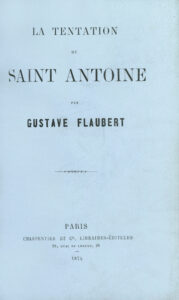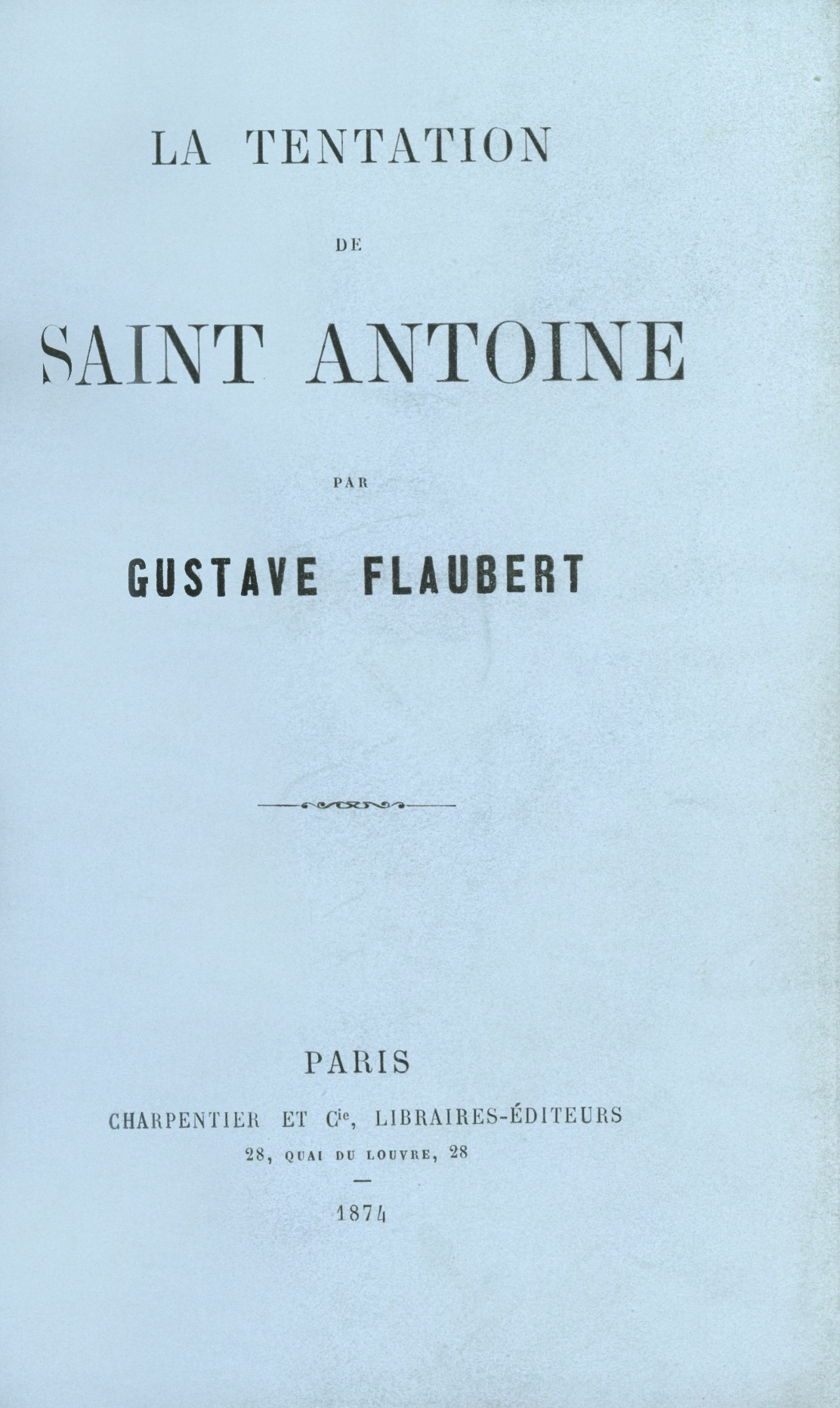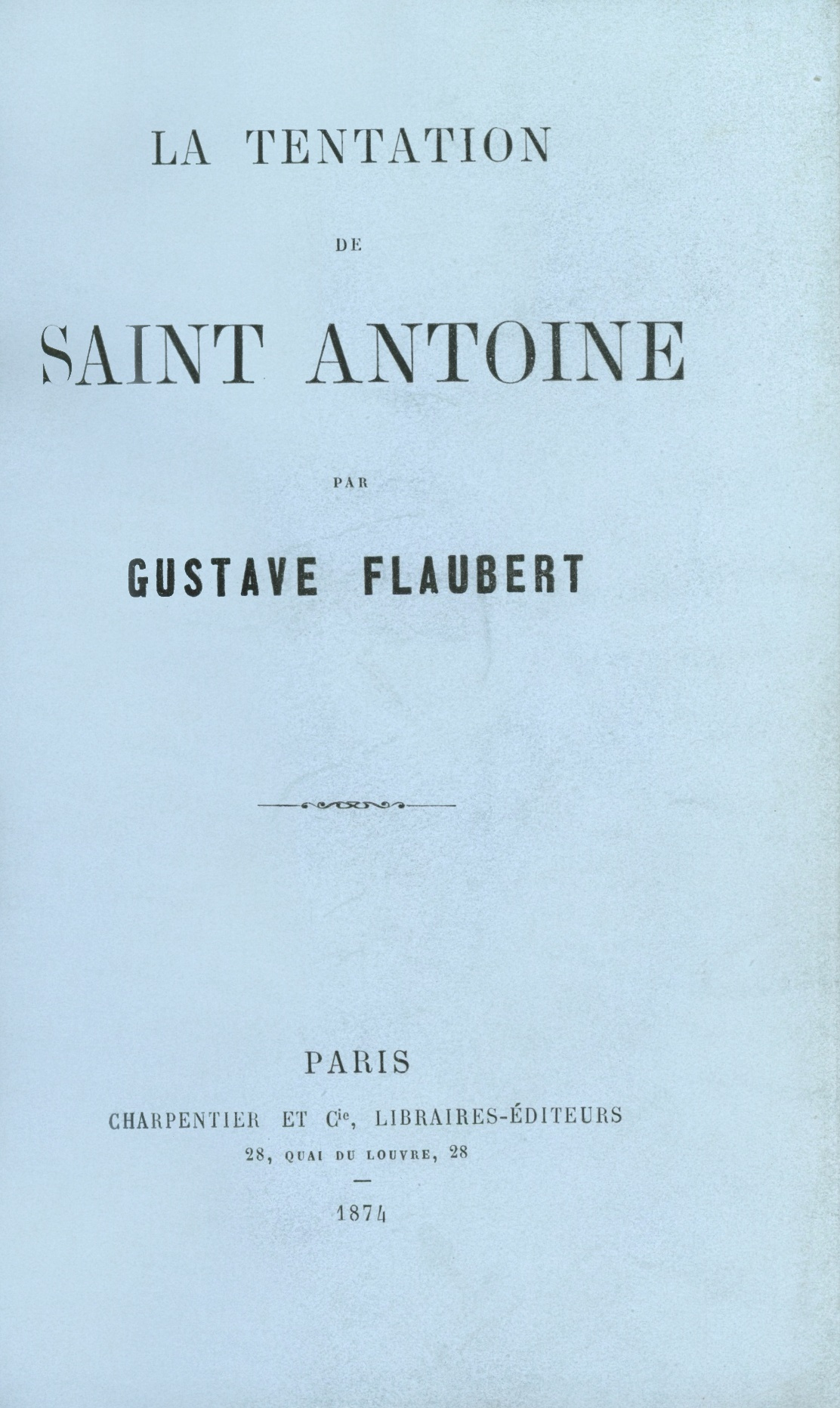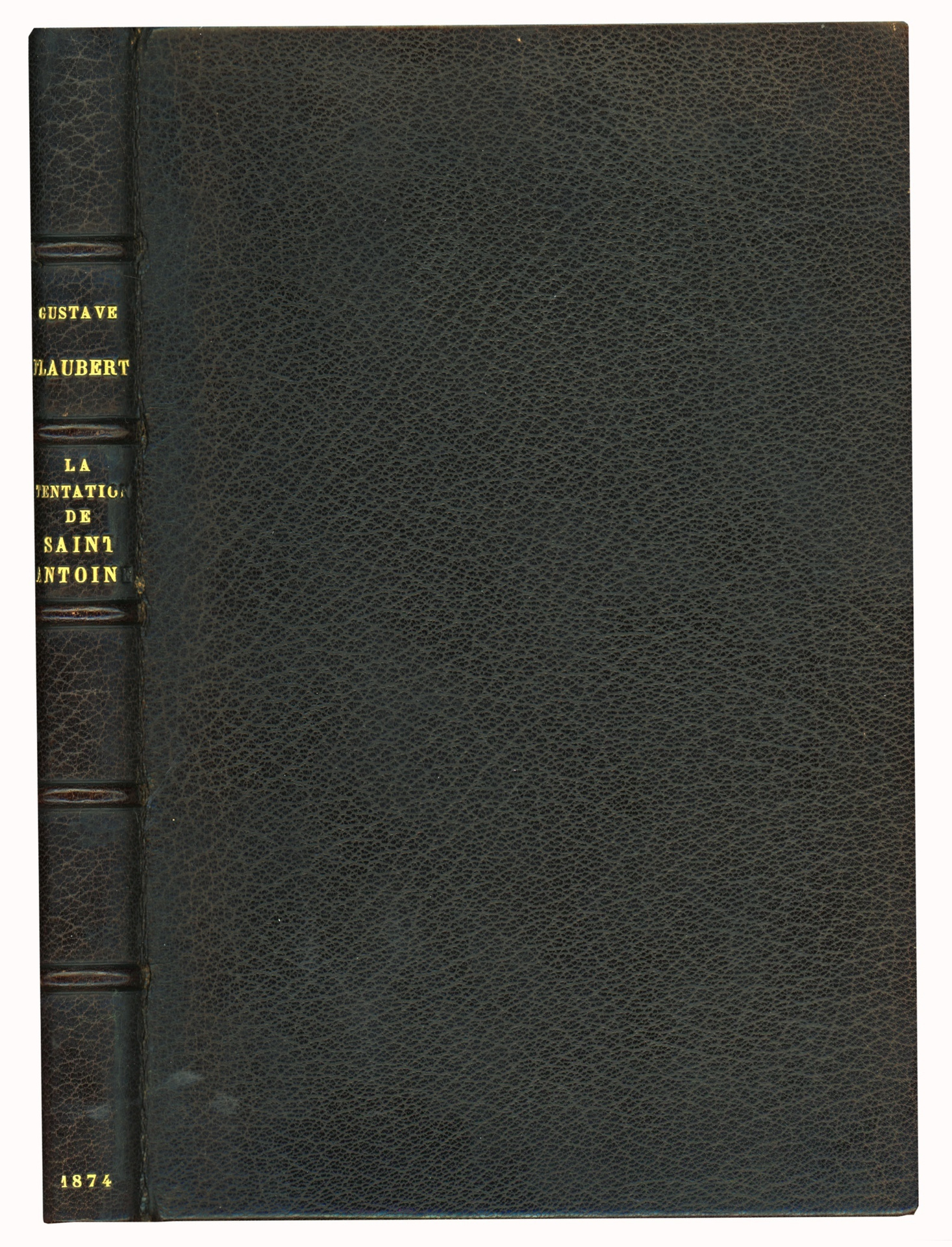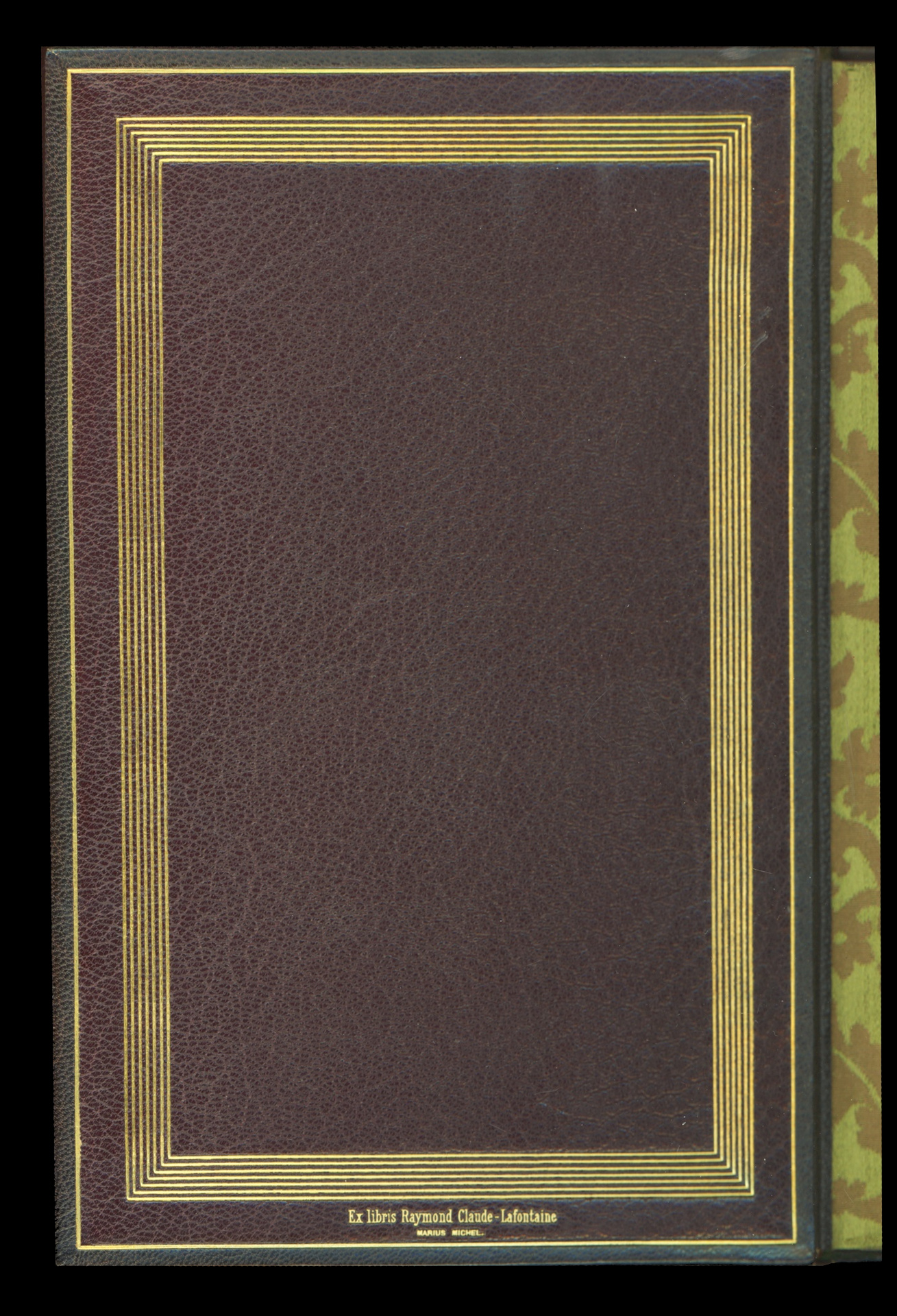Paris, Charpentier, 1874.
8vo [224 x 150 mm], [4] l. (the 1st blank), 296 pp., black morocco, spine with 5 raised bands, author, title and date gilt, brown morocco doublures with a set of multiple gilt fillets, double green floral embroidered satin and marbled paper endleaves, gilt edges, original wrappers bound in. Bound in contemporary morocco with morocco doublures signed by Marius Michel.
First edition: one of 12 deluxe copies on China paper (n° 4).
The most expensive of the copies described by Carteret: “Claude Lafontaine, 1923, dark brown morocco with brown morocco doublures, wrappers (Marius Michel), copy on China paper, 2,220 F.”.
“There are wrappers on dark light blue paper for the large papers, with a back wrapper, the fleuron of the Claye printing house” (case of the present copy).
Carteret, Le trésor du bibliophile romantique, 269 ; Clouzot. Guide du Bibliophile, 121.
The specific idea of the “Temptation” was given to Flaubert in 1845 by a painting by Breughel which he saw in Genoa. He wrote it in 1848-1849 and gave up publishing it on the advice of Louis Bouilher and Maxime du Camp (Correspondence).
He came back to it after publishing “Madame Bovary” in 1856 and then completely rewrote his work from 1869 to 1872, after “L’éducation sentimentale”.
“La Tentation de Saint Antoine”, which Flaubert thought about for 30 years, is certainly his most significant work and the one that best illustrates his concept of art.
This novel allowed him to indulge in those “frenzies of style”, those “lyrical gueulades” in which he saw the surest way to give himself the voluptuousness of spirit he desired.
Written between 1849 and 1874, it allows us to follow the progress of Flaubert’s method and the consolidation of his style.
This work, the most cherished one of the writer, was above all a means for him to gather together his dreams of the Old East and the journey that marked his life.
“A review of all the ancient religious forms, a procession of all the heresiarchs, a parade of the strangest idols, the appearance of Helen and the Queen of Sheba, a swarming of fantastic animals as could be recreated by an exalted imagination which was excited in its exaltation and gifted with a marvelous power to translate itself visibly.
Provenance: Raymond Claude-Lafontaine, bibliophile and secretary of the Société Normande du Livre Illustré (gilt mention at the bottom of the doublure). Copy quoted by Carteret (sale in 1923). Ex libris MB.
See less information
